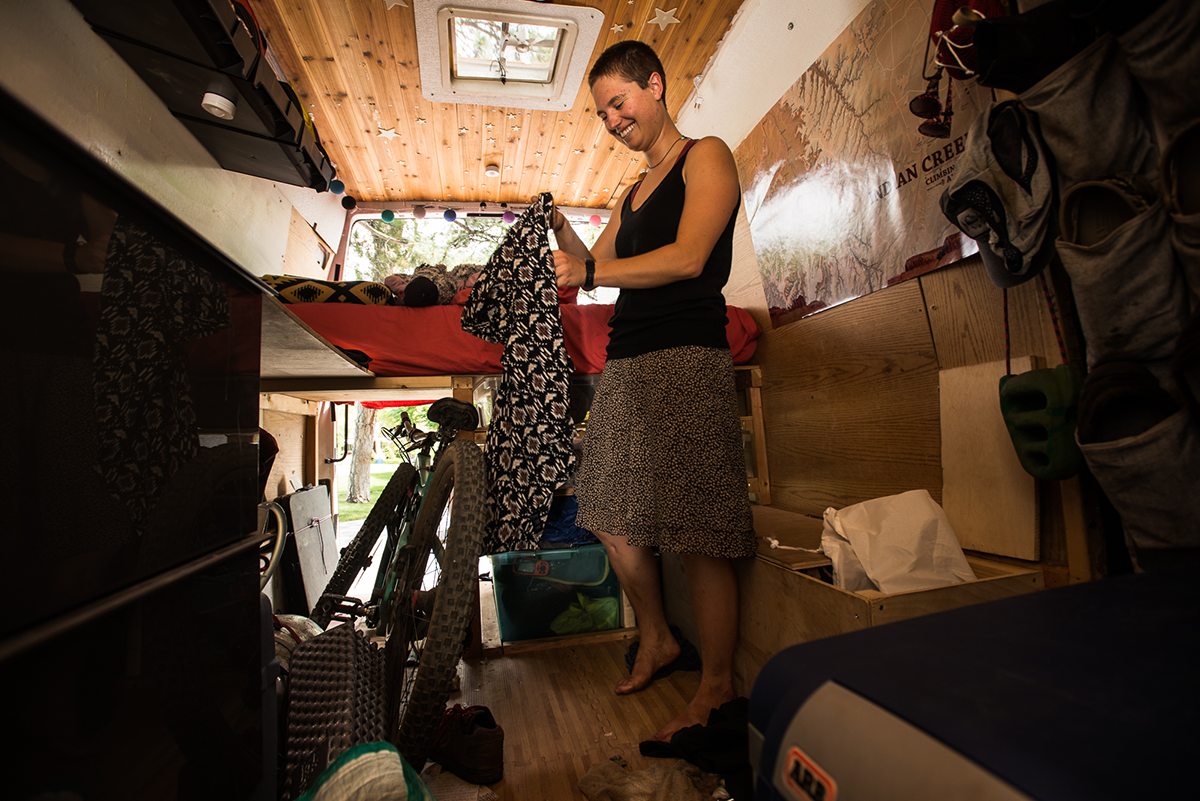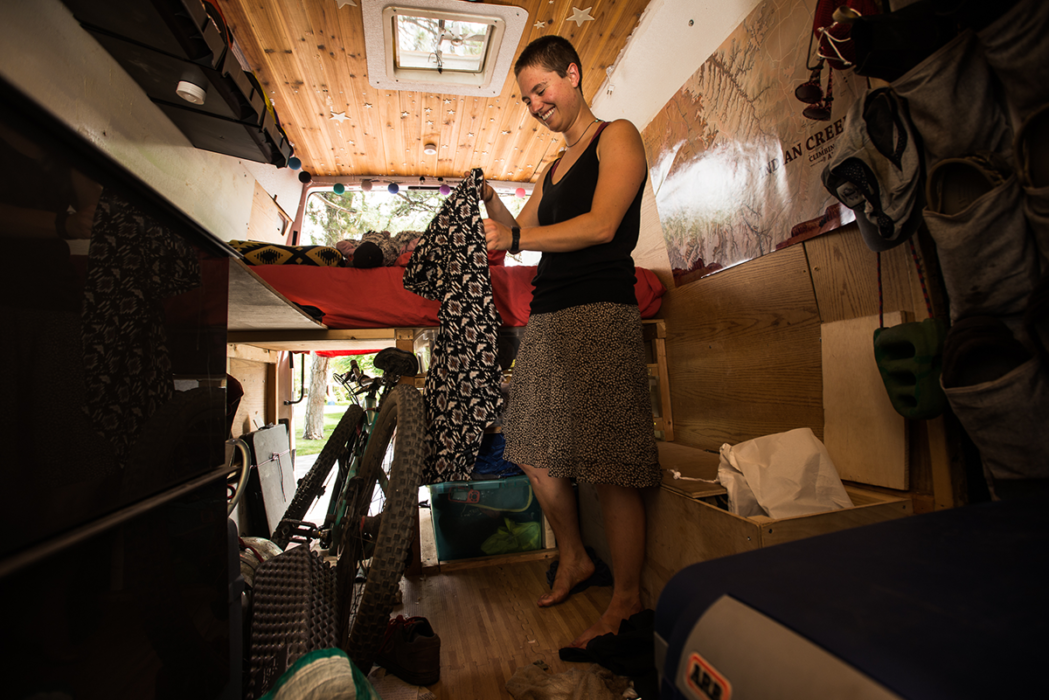
Emilia Wint’s day begins and ends with planning: planning where she’ll shower, planning where she’ll eat and what cafe she should work at, and finally planning where she’ll move her house that night — it must be a place with easy access to a bathroom and water sources. Wint has spent the last three years of her life living in a van.
Welcome to the new American Dream.
Wint isn’t alone. There’s no precise tally, but numerous people across the Western United States now live in retrofitted vans. The lifestyle, glamorized by the #vanlife Instagram feeds, offers flexibility to travel and recreate, but many choose vans just to make ends meet.
Vanlife is enticing for those who can afford the amenities. But the other side of that coin is living unpredictably — waking up at 2 a.m. to get hassled by police, sleeping in stifling heat, and having to meticulously plan out how and where to do basic things like laundry and shower. Its proliferation, according to the folks who spoke with Bitterroot, is a symptom of increasingly desperate times and diminishing housing affordability. It reveals a modern lifestyle built around spending the absolute minimum on living space to afford travel and recreation, as well as a difficult choice some face: spend huge portions of their income on rent, or sleep on the streets.
While vanlifers’ backgrounds and income levels vary, many have adopted the lifestyle simply due to rising costs of housing and life in major Western cities. In the Seattle area, more than 3,300 people were counted living in vehicles in 2018; the total in San Francisco was about 1,800 this year. As rents and other costs of living skyrocket, these individuals have shirked social expectations and struck out in their vans to preserve their quality of life and have some kind of savings. Below, four folks living in vans explain why they ditched living in an apartment or house for a van.
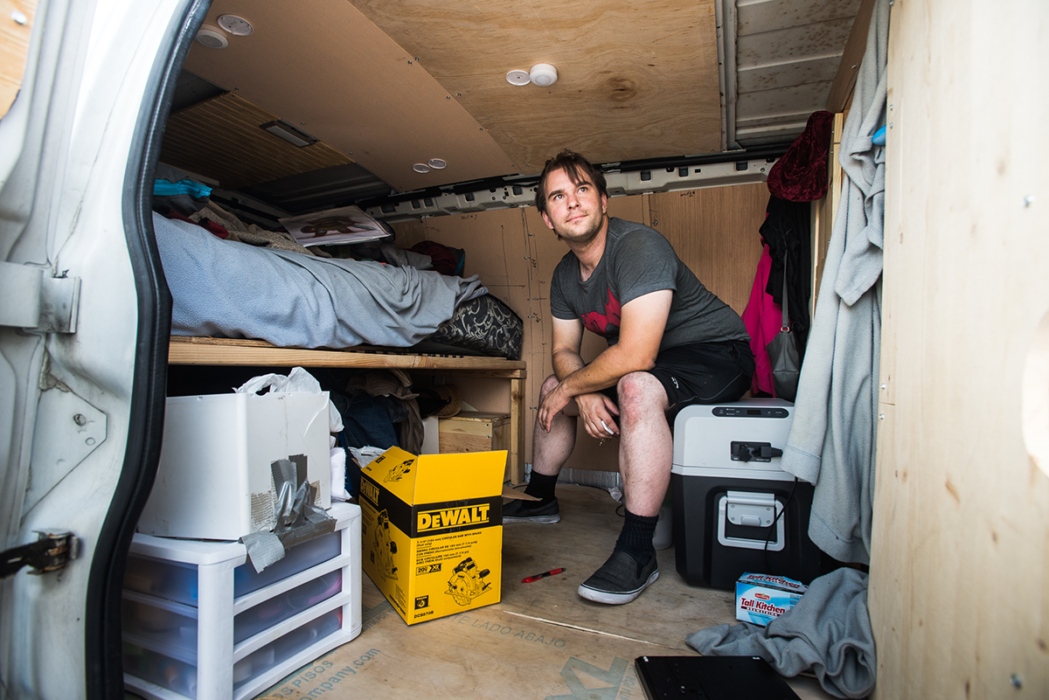
Josh “Jelly” Meyer, 31, is on his way from Grand Rapids, Michigan, to San Diego to pursue a career as a digital artist, and is currently staying in Salt Lake City. His exodus from the Midwest — while planned — began abruptly in April, when his lease expired. He turned his keys in, threw his mattress in the back of his van, and drove west. While trained in animation, he currently works at a construction-supply firm in Salt Lake.
“I think this is the new American Dream,” he said. “I’m trading comfort for freedom, and I would make that trade over and over again.”
Despite the grittiness of his situation, which includes occasional wake-ups from tow trucks, finding places to park and sleep, and living in cramped, stifling conditions, Meyer still thinks that it’s a better option for the opportunity it provides. While he works on his buildout in Salt Lake City, he has bigger — but not too big — ambitions: moving into a tiny house when he arrives in California.
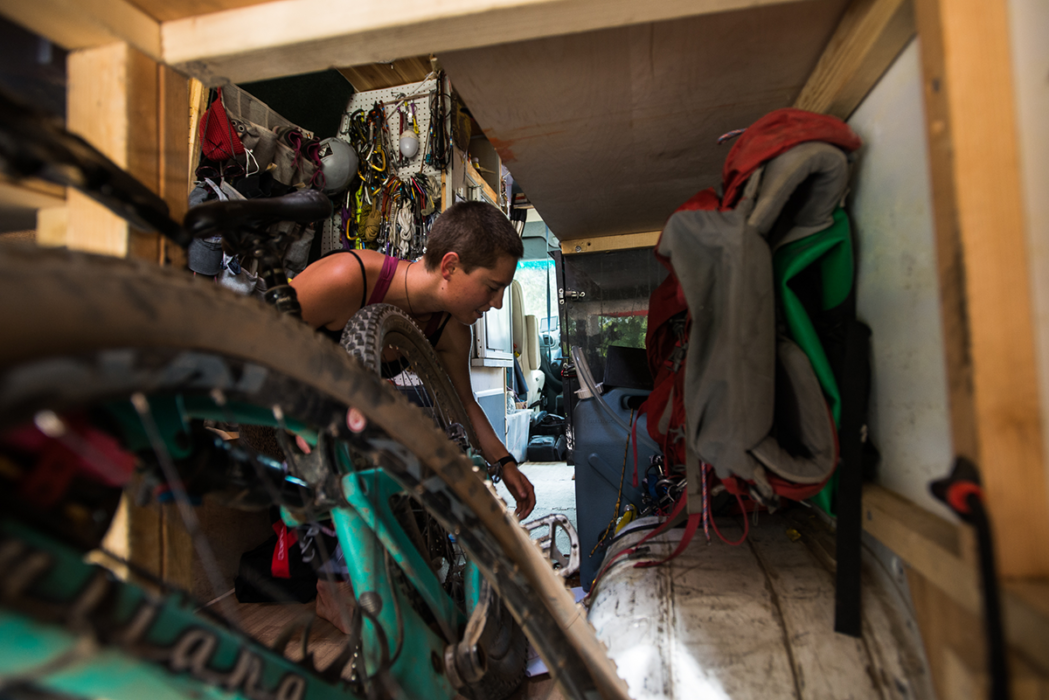
Wint, a former professional skier, works as a mentor for fostered and homeless youth in the Salt Lake area. She bought her van several years ago, when she was a student at Westminster College, as an alternative to expensive dormitories and apartments. Her low-cost housing afforded her flexibility on meager wages.
“Everything’s great when you start,” she said, noting that her savings on rent could fund travel. But over time, the unpredictability got to her: Which parking lot could she stay in that night? Where would she shower in the morning? Where could she work the next day?
“I’ve unsubscribed from all the #vanlife Instagram accounts,” she said.
Beyond waking up hot and sweaty in Salt Lake City mornings, the 25-year-old “was tired of having my wardrobe all over the floor.”
“We’re fucked financially, we’re never getting houses, we have to find something,” she said. Now, she’s selling her van and getting a room in an apartment with the help of her parents.
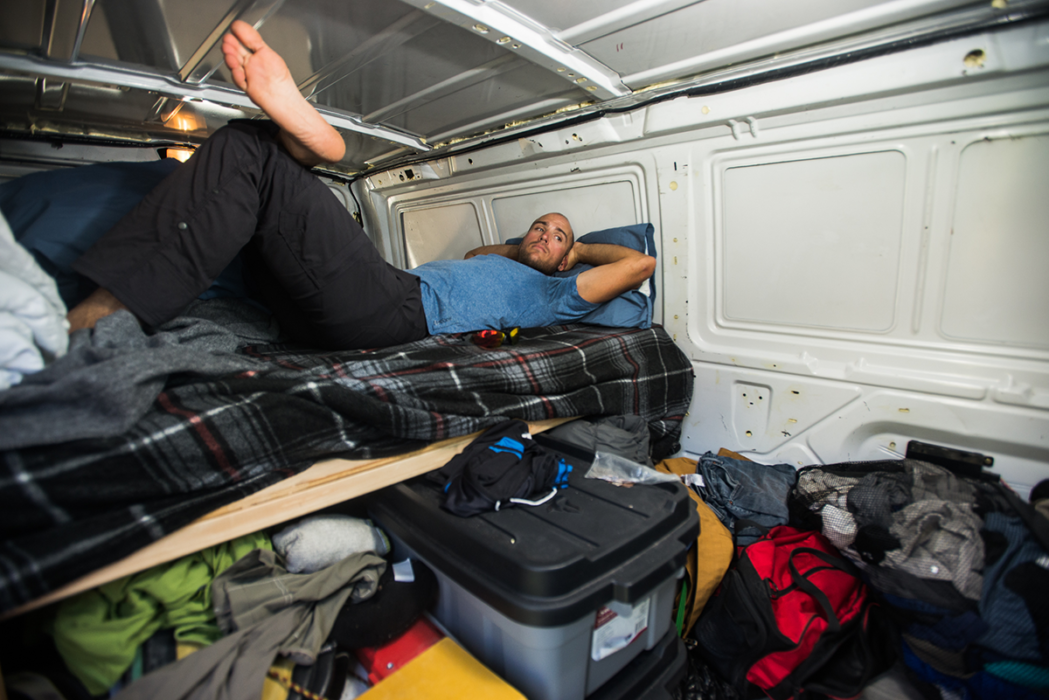
Brian Long, 32, a carpenter in Park City, the resort town east of Salt Lake City, bought his van six months ago for $2,400. Long, a rock climber, said the van allows him to travel and explore the outdoors instead of paying high rent. While he makes a modest income as a carpenter, $20 an hour, the cost of living in Park City precludes him from being able to rent, save money, and enjoy his hobbies.
His current setup is austere and messy, but he doesn’t mind because of the flexibility it affords him. “I just think it’s a really good life, if you don’t mind not being luxurious,” he said.
While he would like to have a permanent house, he also realizes that it’s not economically sensible if he wants to have travel and recreation opportunities, as well.
“Heating and AC is the biggest issue,” he said. “Not having a kitchen sucks, too, but with all the money you save, you can easily afford to eat at a nice place that you actually think is healthy. I love it because I save so much money, I can choose to follow seasons if I want. I can go up to Washington in the summer if I wanted. If I’m afraid of the fierce winter, I go all the way down to Mexico.”
Long recently damaged his van. While it still runs, he’s planning to flip it for a new model as the cost of repairs will exceed the value of the van.
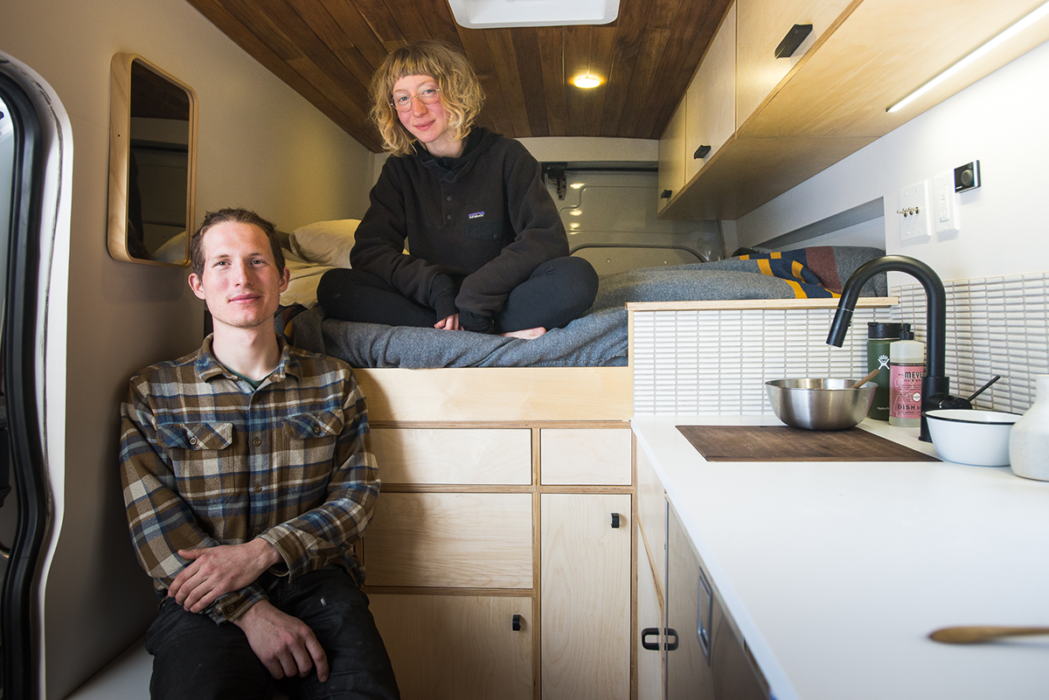
Mechanical engineer Brandon Vandenhoek lives with his girlfriend, Mikayla Beach, a designer, in their retrofitted van in Mountain View, California. While the two make enough to pay for an apartment in the area, they decided to stay in a van as it would let them save and have a more active lifestyle.
While they’ve spent around $30,000 on their accommodations, that substantial sum wouldn’t even cover seven months’ rent — according to Zillow, the median Mountain View rental listed in June was $4,400 a month. Vandenhoek and Beach say that kind of rent would preclude their ability to have any other kind of life outside of their work.
“Van life for many has become the rule,” Vandenhoek said.
And now even Vandenhoek and Beach are feeling squeezed. The Mountain View City Council this spring passed an ordinance banning long-term sidewalk car living, but lawmakers directed city staff to draft a new law after public opposition. The back-and-forth has Vandenhoek, Beach, and the estimated 200 to 300 others living in their vehicles in Mountain View on edge. If they were forced out of their van, Vandenhoek knows that he and Beach could get by, albeit not with the same lifestyle they enjoy now. But for others in Mountain View, leaving their vans could be the difference between sleeping in a bed one night and under newspaper the next.
“In my opinion, in the Bay Area, it says a lot about how our laws are structured around housing,” said Vandenhoek. “Our housing system is exceptionally racist and classist in that it doesn’t allow poor people to get ahead.”

